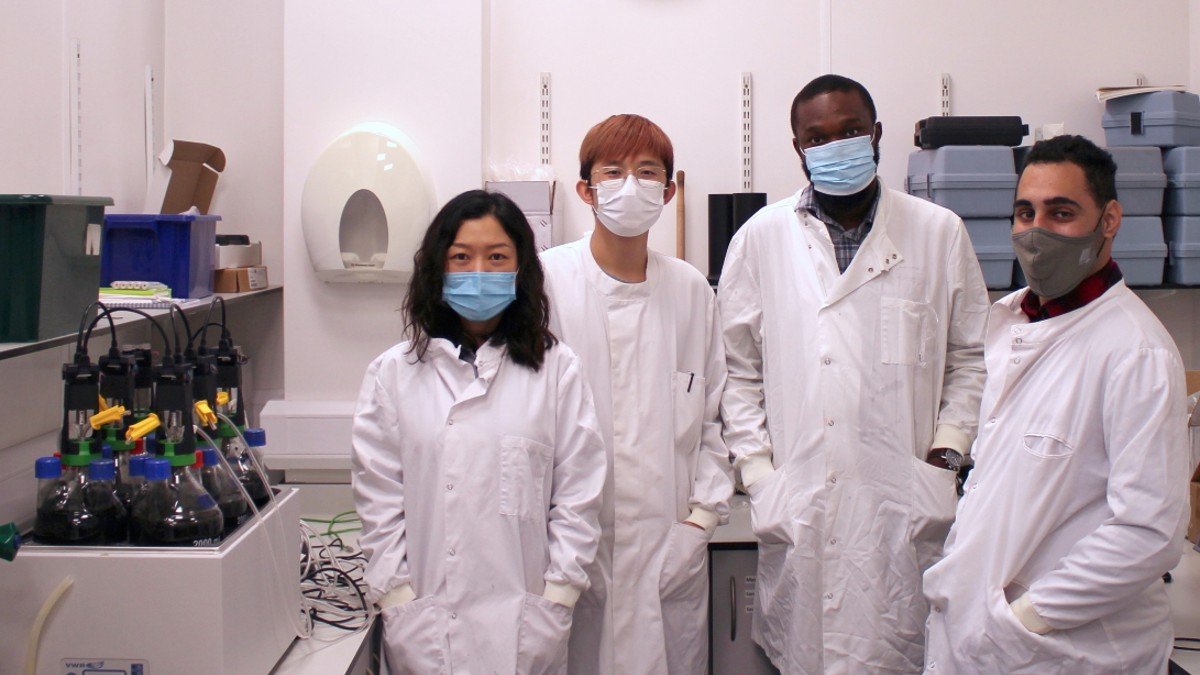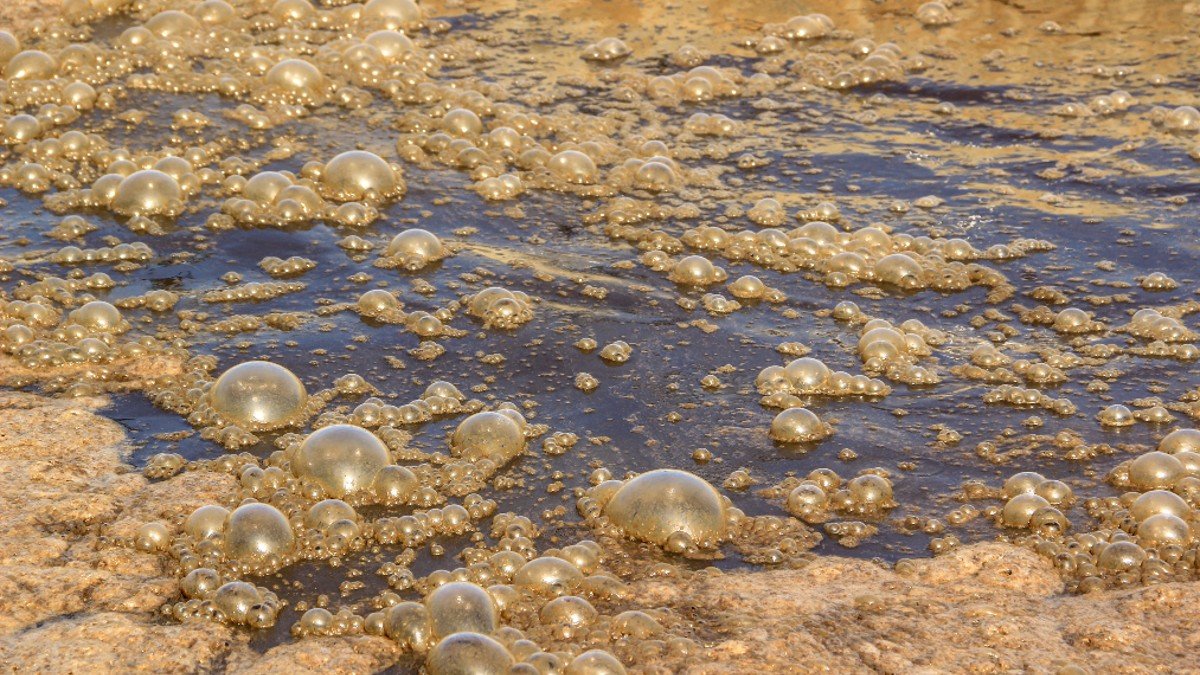Reducing Co2 in sewage
With COP26 under way, we focus on some of our research tackling climate catastrophe. Today, we catch up with Dr Bing Guo, whose work focuses on reducing Co2 emissions and increasing energy and nutrient recovery from wastewater…

Bing and her team of Lingkui Bu, Mac-Anthony Nnorom and Benjamin Yousse in the laboratory
When most academics say their career is going down the pan, it’s rarely a positive statement. Bing Guo, however, is an exception. Her research involves not only going down the pan, but rounding the u-bend and ending up in a sewage plant.
Bing’s work focuses on the sustainable treatment of wastewater – or, to put it bluntly, sewage. And it could help decrease the amount of ‘greenhouse gas’ carbon dioxide (Co2) in the atmosphere and create a clean source of energy.
Waste of energy
“The conventional way of treating sewage consumes a lot of power,” says Bing. “Wastewater floats into a big treatment facility via a series of pipes. Once there, aerobic microorganisms degrade the pollutants in it.
“But these microbes need oxygen to grow, which means we need to artificially supply oxygen to aerate them. This produces the ‘greenhouse gas’ Co2, which is not a desirable outcome.
“Fortunately, we have more environmentally friendly options to treat sewage and these are what my research involves.”
Good working ordure

The not-so-sweet smell of success: Bing's research could turn wastewater into a clean source of energy
Bing continues: “The first method uses anaerobic microbes, which don’t require oxygen, instead of aerobic ones. This means there’s no energy consumption by having to supply oxygen. This instantly reduces the carbon footprint of the process.
“At the same time, anaerobic microbes can transform the organic pollutants into biogas such as biomethane, which can be used for electricity or heating.
“The second way is to use phototropic microorganisms. This means the microbes can use light as energy and they ‘eat’ Co2 to grow, a process for Co2 capture and utilisation rather than emission to the atmosphere.
“Via this second process, we can also extract valuable chemicals. We think we can create and extract biodegradable plastics or other biopolymers using this process.”
Research success
Bing’s work in this area has not gone un-noticed and her most recent project has secured funding from the Royal Society.
“This venture looks at removing harmful nitrogen from waste water,” reveals Bing. “We’re mainly talking about ammonias. These can be toxic to rivers and lakes and the species living in them if they are discharged.
“I’m working on a method to get rid of these with reduced energy consumption using Co2 utilisation. The group of bacteria we’re studying for this process is called anammox and they ‘eat’ Co2 to grow. They can transform the ammonia from wastewater and turn it into nitrogen gas, which makes up 78 per cent of the air we breathe so it’s totally non-harmful.
“Because it’s a group of anaerobic bacteria, it doesn’t need an oxygen supply; and because it utilises Co2 rather than emits it, it means there’s a considerable decreases of carbon footprint.”
Learn more about Bing's research and the work of our Centre for Environmental Health and Engineering (CEHE).
Media Contacts
External Communications and PR team
Phone: +44 (0)1483 684380 / 688914 / 684378
Email: mediarelations@surrey.ac.uk
Out of hours: +44 (0)7773 479911
